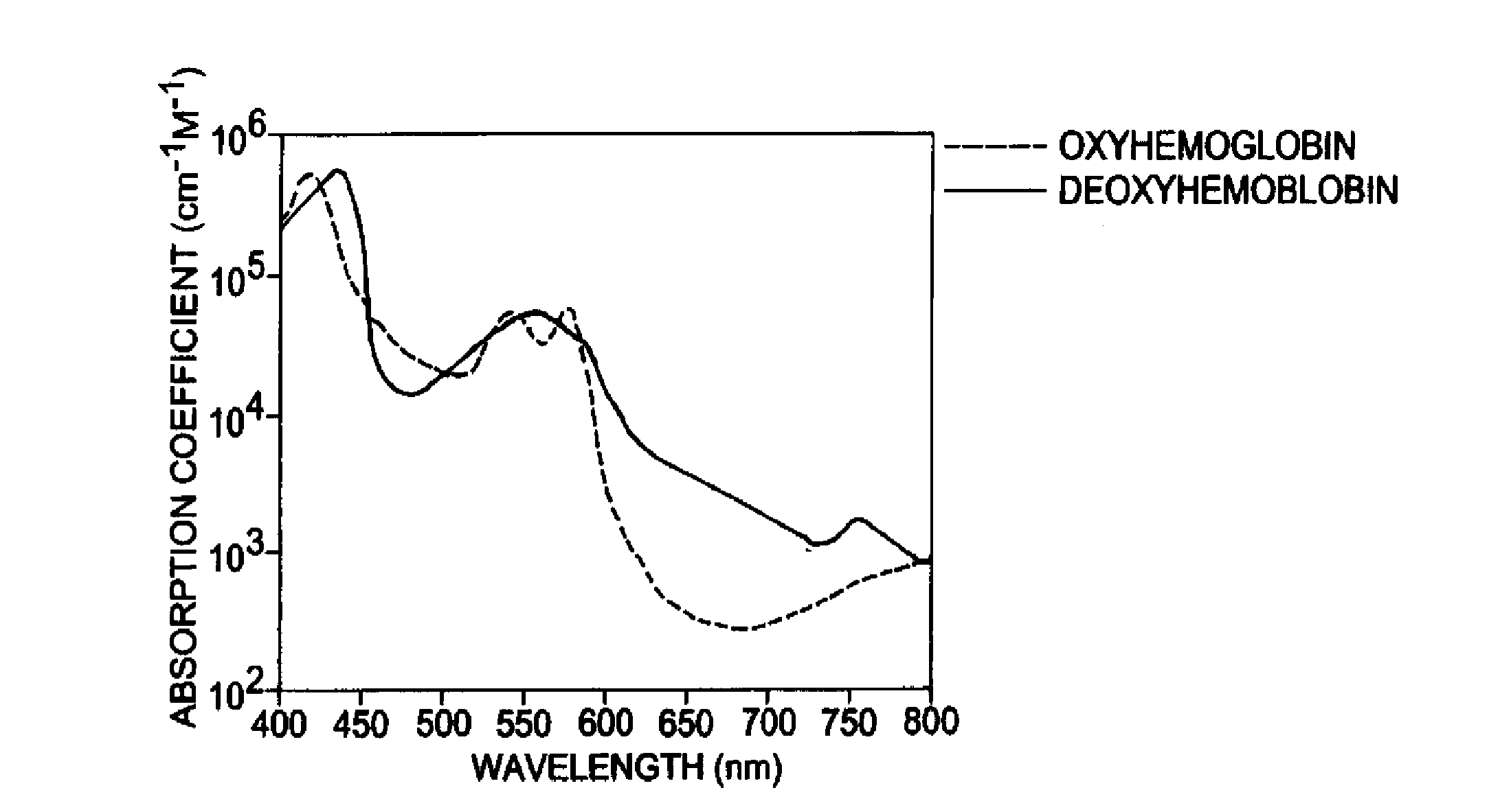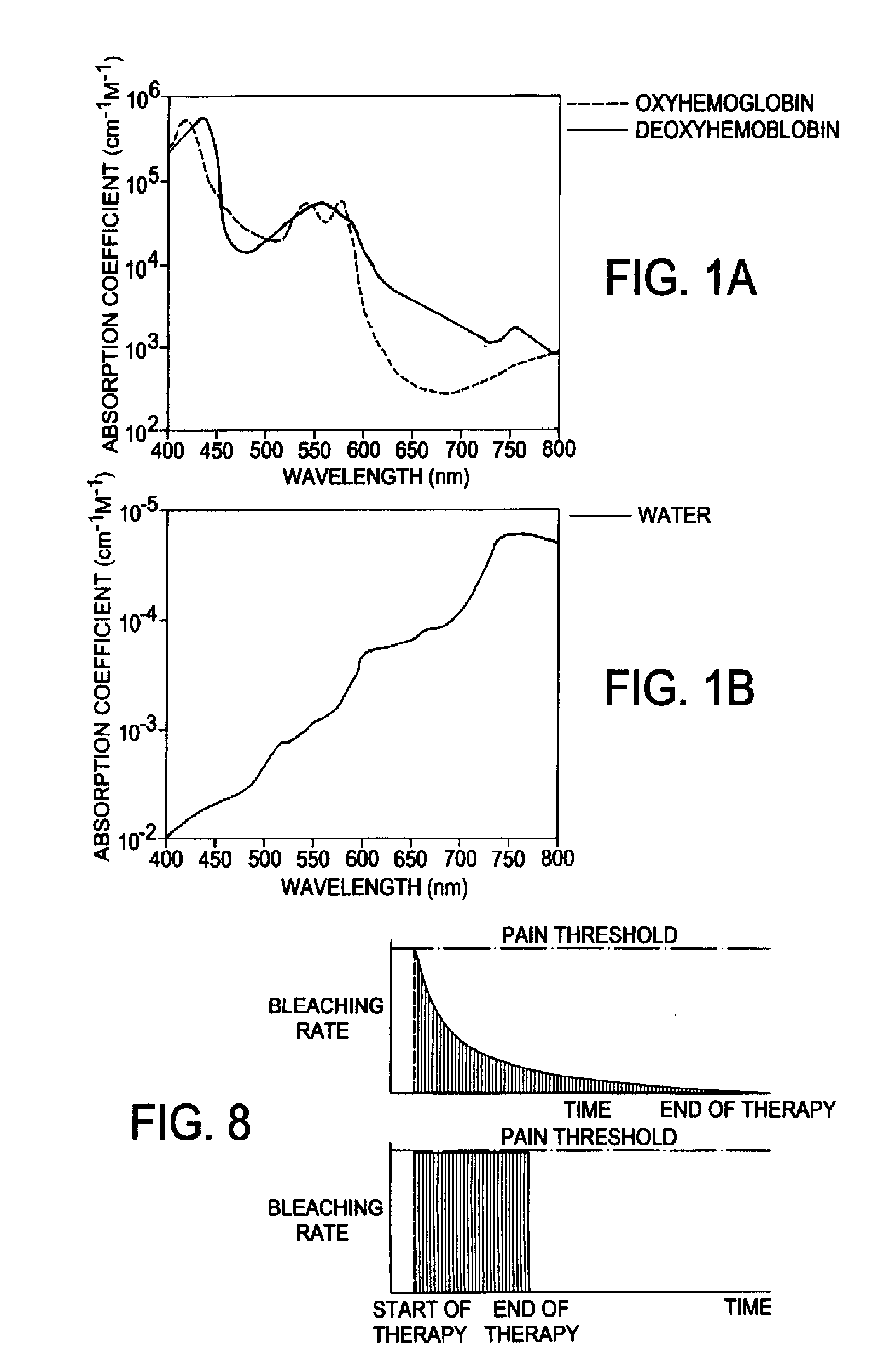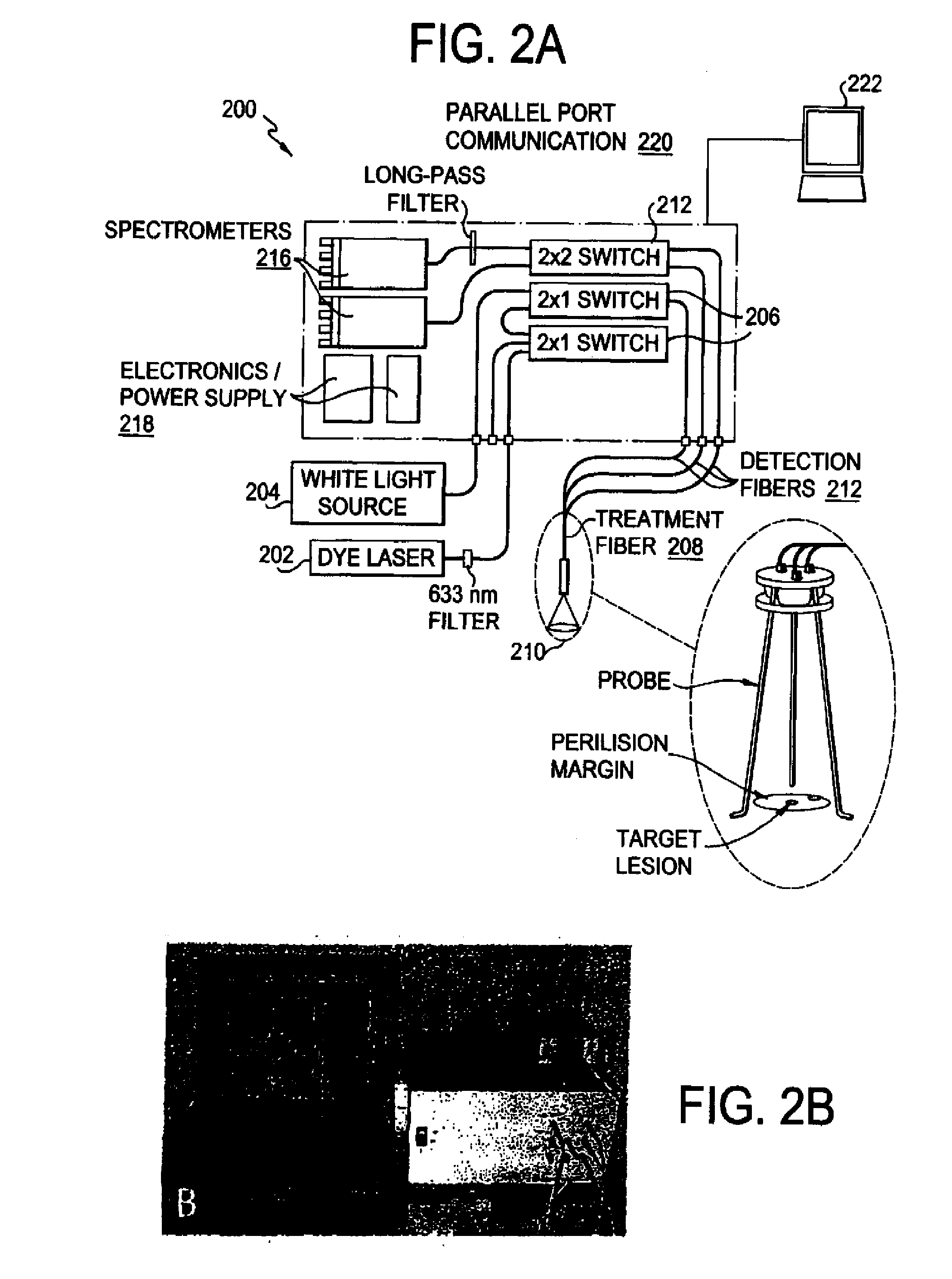Feedback-controlled method for delivering photodynamic therapy and related instrumentation
a technology of photodynamic therapy and feedback control, applied in the field of spectroscopic measurement, can solve the problems of inconsistent prediction of treatment efficacy, complicated dosimetry, and dose prescriptions using these parameters
- Summary
- Abstract
- Description
- Claims
- Application Information
AI Technical Summary
Benefits of technology
Problems solved by technology
Method used
Image
Examples
Embodiment Construction
[0019]A preferred embodiment will now be set forth in detail with reference to the drawings, in which like reference numerals refer to like elements or steps throughout.
[0020]Singlet oxygen, 1O2, generated during PDT can oxidize the photosensitizer (oxygen-mediated photobleaching). Additionally, triplet-state photosensitizer reactions provide a competing bleaching mechanism whereby bleaching is mediated by the triplet-state photosensitizer molecule directly (triplet-state photobleaching). Both mechanisms reduce tissue fluorescence. Fluorescence photobleaching and the rate of photobleaching of both photosensitizer and other fluorophores can therefore be used to implicitly report dose.
[0021]Incorporation of photosensitizer photobleaching as a dosimetry parameter requires a careful examination of the photochemical pathway governing the photosensitizer and 1O2 dynamics. Photosensitizer photobleaching in vivo is accessible through fluorescence measurements and has been inve...
PUM
 Login to View More
Login to View More Abstract
Description
Claims
Application Information
 Login to View More
Login to View More - R&D
- Intellectual Property
- Life Sciences
- Materials
- Tech Scout
- Unparalleled Data Quality
- Higher Quality Content
- 60% Fewer Hallucinations
Browse by: Latest US Patents, China's latest patents, Technical Efficacy Thesaurus, Application Domain, Technology Topic, Popular Technical Reports.
© 2025 PatSnap. All rights reserved.Legal|Privacy policy|Modern Slavery Act Transparency Statement|Sitemap|About US| Contact US: help@patsnap.com



